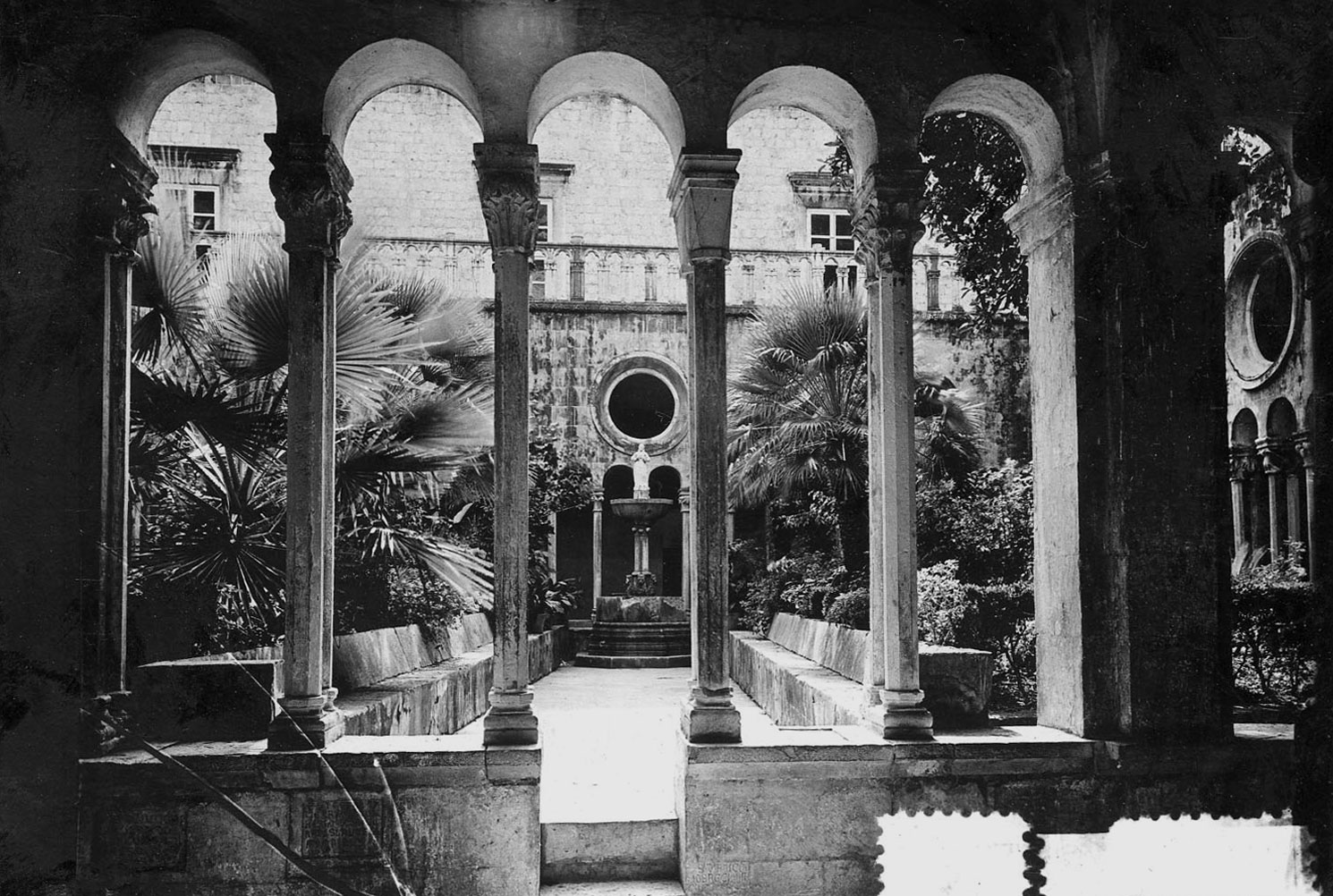Dubrovnik
The Historical Complex of Dubrovnik
Dubrovnik, a late medieval planned city on the southern shores of the Adriatic, became an important medieval maritime power in the 13th century. Its economy continued to flourish in the historical period of the Dubrovnik Republic, a special political and territorial whole the inhabitants of which were proud of their culture, successful commerce and the freedom they managed to preserve through the centuries.
Although damaged to a great extent by the earthquake of 1667, Dubrovnik managed to preserve its lovely Gothic, Renaissance and Baroque churches, its monasteries, palaces and fountains. The walls of old Dubrovnik surround this exceptionally well preserved complex of public and private, sacred and secular buildings. The Rector’s Palace, the main street of the old city, Stradun, the Church of St Blaise, the cathedral, three large monasteries, the building of the Customs House and the Council Chamber, the bell tower and the fountain are just some of the important buildings of the old city centre, which in 1979 was placed on the UNESCO World Cultural Heritage List. There are several monuments in the display of the Croatian Academy of Sciences and Arts Glyptotheque that were originally housed in the protected city centre, part of the Franciscan monastery and church, as well as the jacquemarts from the city bell tower.
The jacquemarts from the city clock (the Green Ones)
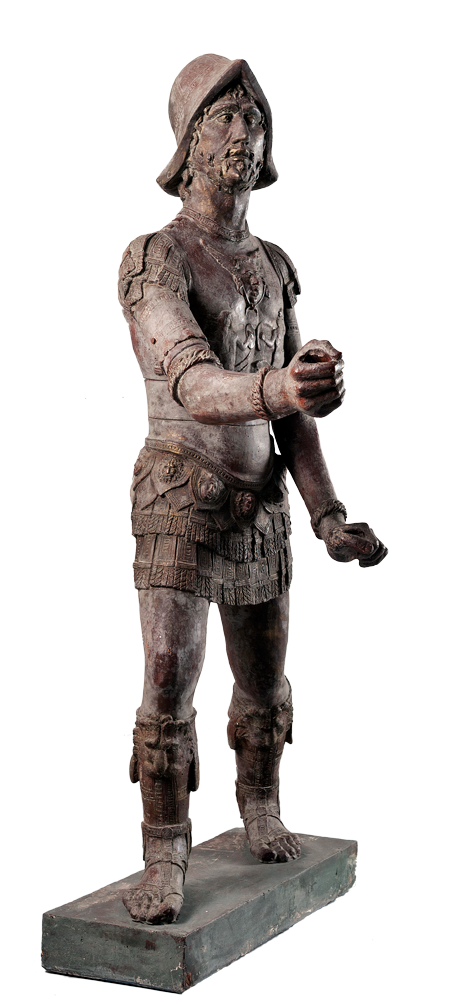
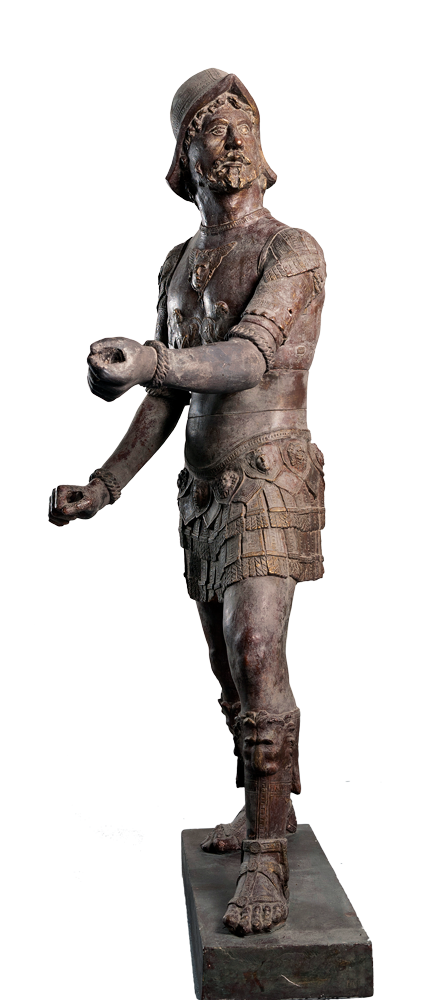
The figures from the Dubrovnik city tower, popularly dubbed Maro and Baro in the city, and also known as the Green Ones (because of the patina the bronze took on with time) are among the first rate works of Renaissance sculpture, and the only statues done in bronze of that time. It is hypothesised that they were made in around 1478 by Michele di Giovanni. The moving bronze sculptures struck the hours on the Dubrovnik city bell tower, which was put up in 1444/1445.
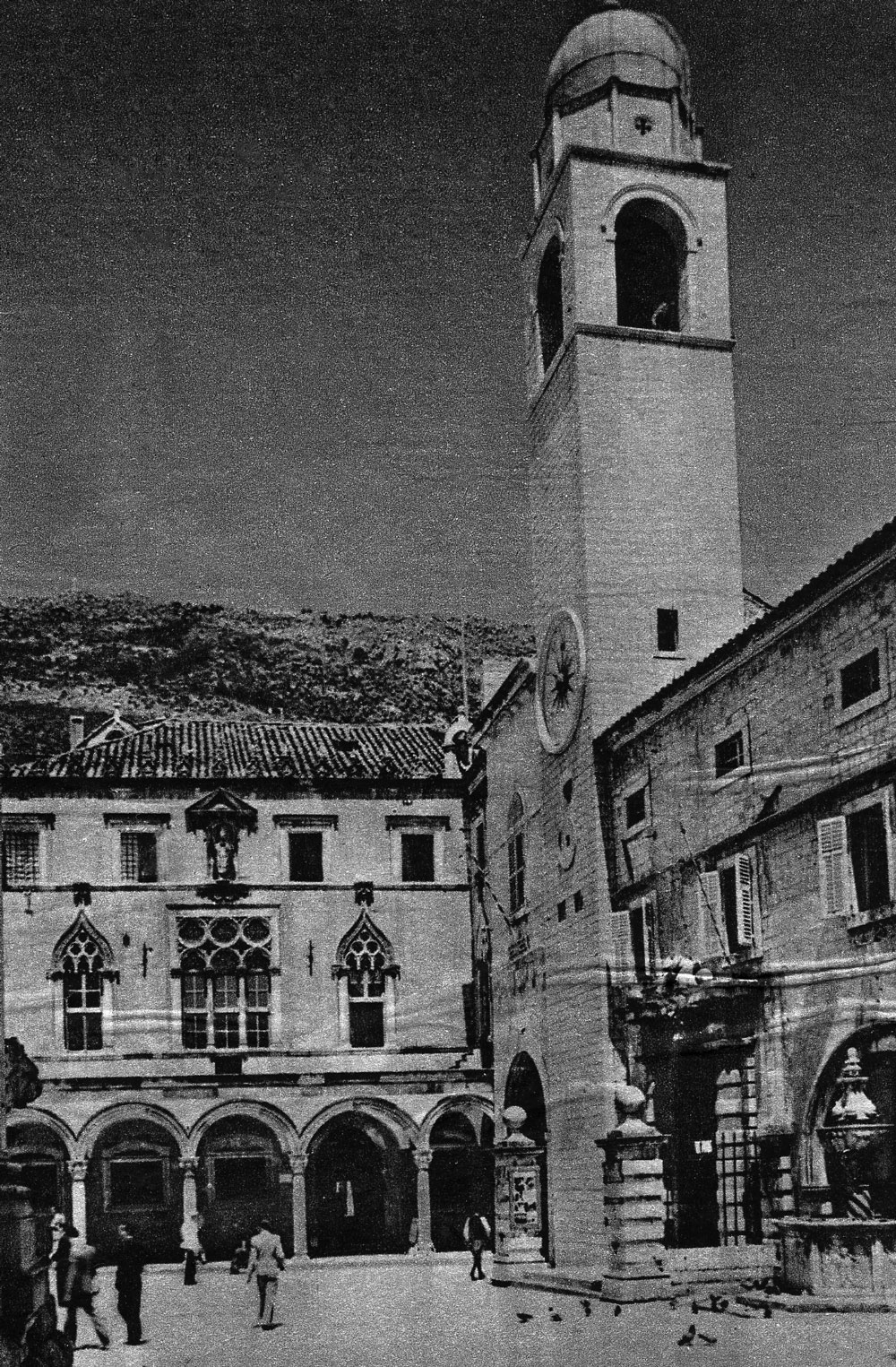

The Franciscan Monastery and the Church
Leonard and Petar Petrović: Portal of the Church of the Franciscan Monastery,
The construction works on the Friars Minor Priory and the Church of St Francis within the walls started in 1317. Among the few Dubrovnik buildings to have survived the 1667 earthquake, the priory and the church stand out for their architecture and decoration. The Church of St Francis has a lavish southern Gothic portal, the work of the brothers Leonard and Petar Petrović, 1498. The portal is permeated with the ideas of the Late Gothic, the depictions revealing the influence of Pietro di Martino of Milan and of George of Dalmatia. The monumental portal is spanned with an archivolt with the central sculpture of the Pietà in Late Gothic style.
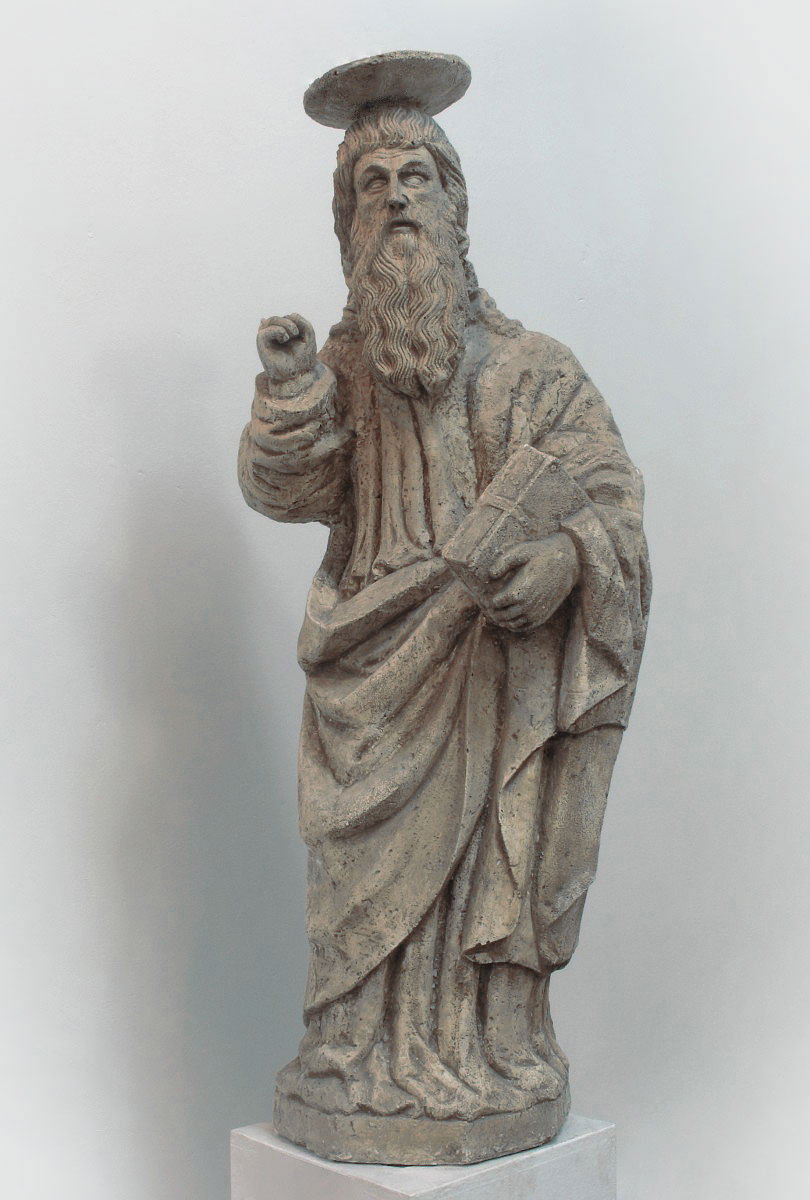
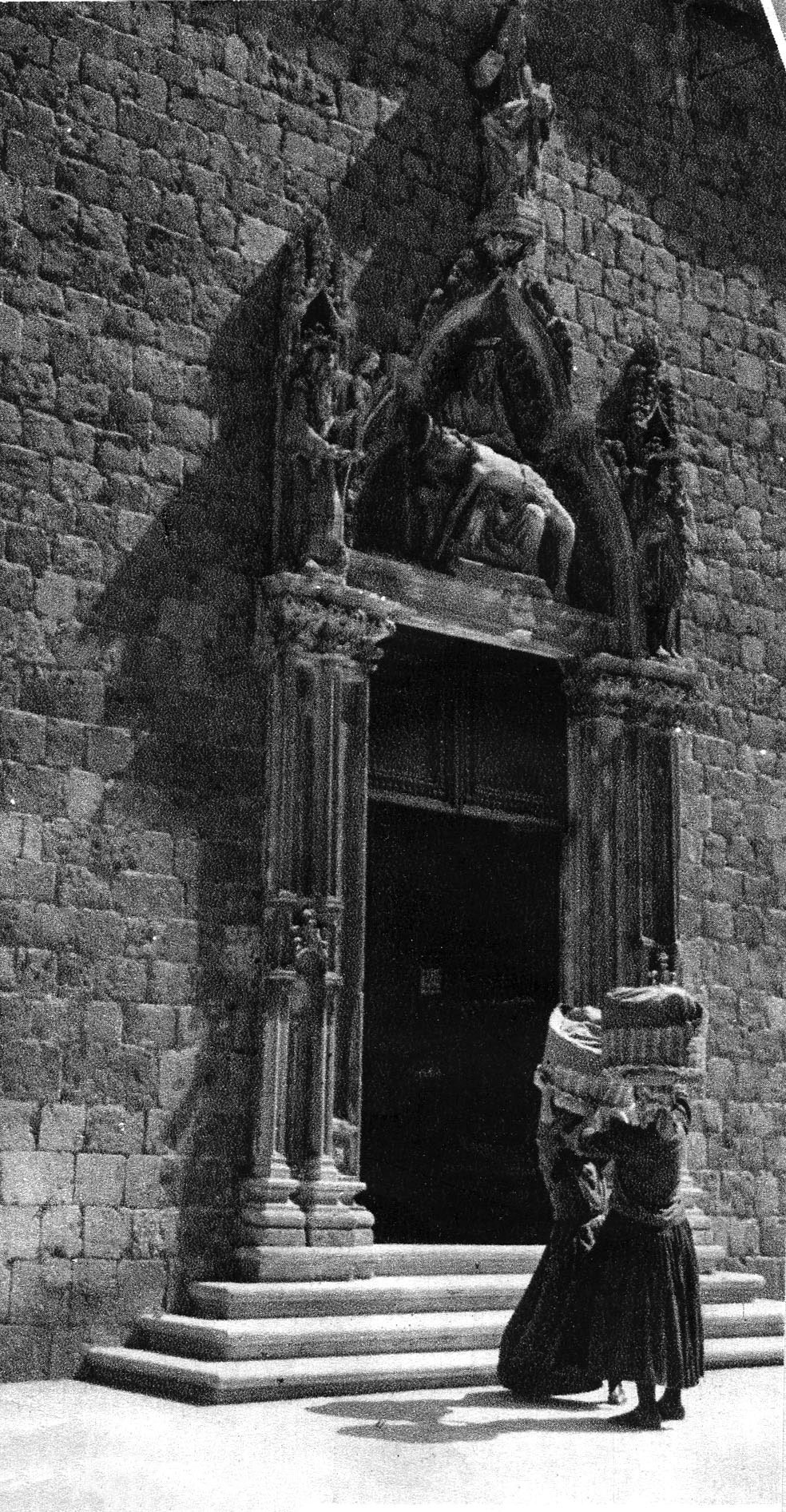
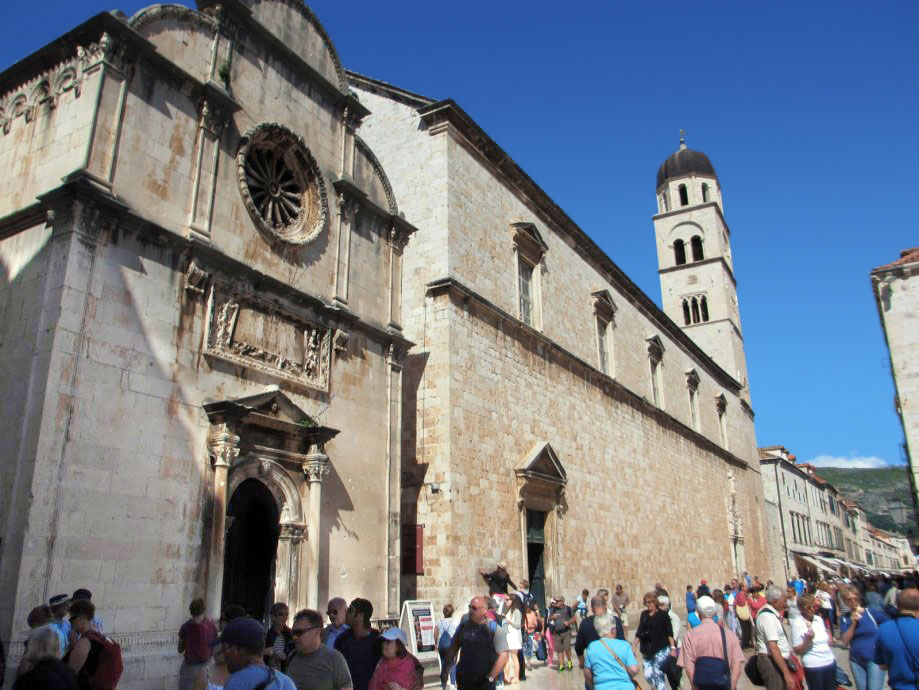
Mihoje Brajkov of Bar: Cloister of the Franciscan Priory in Dubrovnik,
The interior of the monastery with its Late Romanesque cloister of 1360 is the work of Mihoje Brajkov. The cloister has 120 columns surrounding the internal garden, and part of the cloister was decorated with frescoes, many of which have faded in the course of time. This cloister is one of the best Romanesque-Gothic productions in the whole of Croatia. In the centre there is a fountain with the figure of St Francis.
